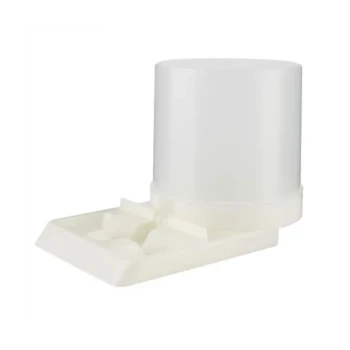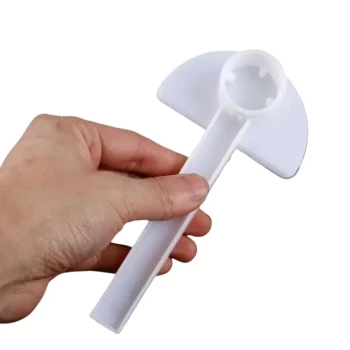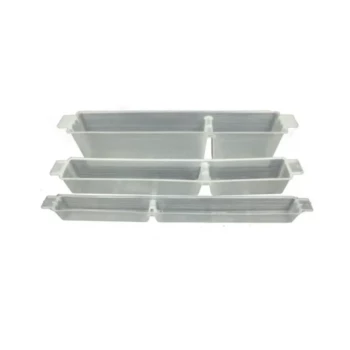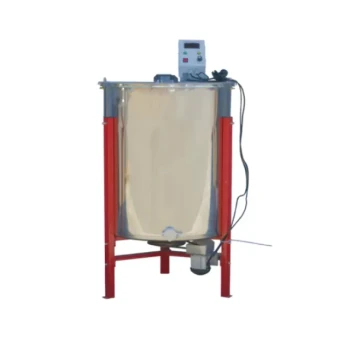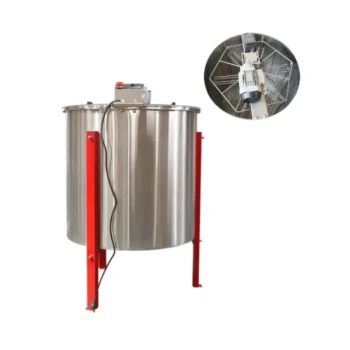Introduction
For beekeepers, colony health hinges on one critical factor: nutrition. While honeybees rely on nectar for energy, pollen provides the proteins, lipids, and micronutrients essential for brood rearing and immune resilience. Yet, modern challenges—habitat loss, monoculture farming, and climate variability—make natural pollen scarce. This guide dives into why natural pollen outperforms substitutes, how to harvest it sustainably using pollen traps, and when to supplement with patties for optimal hive productivity. Backed by science and real-world case studies, you’ll learn actionable strategies to elevate your beekeeping practice.
The Critical Role of Pollen in Bee Nutrition
Honeybees don’t just collect pollen—they engineer it into "bee bread," a fermented superfood packed with probiotics and digestible proteins. Unlike artificial substitutes (e.g., soybean or yeast-based patties), natural pollen contains:
- 22+ amino acids, including methionine and lysine, critical for larval development.
- Phytonutrients like flavonoids, which boost immunity against pathogens like Nosema.
- Enzymes that aid digestion and nutrient absorption.
Did you know? A single colony needs 20–30 kg of pollen annually to sustain brood rearing. When natural sources dwindle, worker bees forage farther, shortening their lifespans and stressing the colony.
Why Natural Pollen Outperforms Artificial Substitutes
Artificial pollen supplements often fail to mimic nature’s complexity:
- Protein Imbalance: Soybean flour lacks the amino acid profile of diverse floral pollen, leading to malnourished brood.
- Absence of Co-Factors: Synthetic blends skip micronutrients (e.g., zinc, magnesium) that regulate queen fertility.
- Palatability Issues: Bees reject poorly formulated patties, wasting resources.
Case in point: A 2020 study found colonies fed natural pollen produced 40% more worker bees than those on soy-based diets.
Seasonal Timing: Aligning Collection with Brood Rearing Cycles
Maximizing pollen’s impact requires syncing with your bees’ biological calendar:
Spring: The Critical Window
- Pre-Swarming (6–8 weeks before): Supplement with pollen patties to fuel queen egg-laying.
- Peak Bloom: Install pollen traps when 10–20% of foragers carry pollen (avoid overharvesting).
Summer/Fall: Storage Prep
- Freeze surplus pollen (see Storage Methods below) for winter feeding.
Pro Tip: Monitor brood patterns. If larvae appear undersized, increase pollen patty protein ratios.
Best Practices for Pollen Traps and Patty Formulation
Setting Up Pollen Traps Without Stressing Colonies
- Location: Place traps on strong hives (40,000+ bees) during peak foraging (10 AM–2 PM).
- Duration: Limit collection to 3–4 hours daily to avoid depleting reserves.
- Design: Use traps with 5-mm mesh screens—small enough to scrape pollen loads but large enough to minimize bee irritation.
Balancing Proteins: Ideal Ratios of Pollen to Soybean Flour
For supplemental patties:
- Base Mix: 50% natural pollen, 30% soybean flour, 20% sugar syrup (by weight).
- Enhancers: Add 2% brewer’s yeast for B vitamins.
Ever wondered why bees sometimes ignore patties? Temperature matters! Bees prefer patties warmed to 95°F (35°C), mimicking freshly collected pollen.
Preserving Nutrient Integrity in Storage
From the referenced studies, here’s how to lock in pollen’s value:
- Freezing: Store in airtight glass jars at –4°F (–20°C) for 2+ years.
- Drying: Dehydrate at 104°F (40°C) for 48 hours, then pack in dark containers to block UV degradation.
- Moisture Control: Add silica gel packets to prevent mold.
Case Studies: Success Stories of Enhanced Hive Productivity
- Minnesota Beekeeper (120 Hives): By freezing spring dandelion pollen and winter-feeding patties, they reduced colony losses from 35% to 12% in two years.
- California Almond Pollinators: Hives supplemented with 50% natural pollen patties saw a 28% increase in almond pollination efficiency.
Conclusion: Actionable Steps for Beekeepers
- Prioritize Natural Pollen—harvest sustainably and store properly.
- Time Supplementation with brood cycles for maximum impact.
- Use honestbee’s pollen traps and storage kits to streamline the process.
By treating pollen as the cornerstone of hive health, you’re not just sustaining colonies—you’re future-proofing them.
Ready to refine your pollen strategy? Start by auditing your hives’ current nutrition gaps. The bees will thank you.
Visual Guide
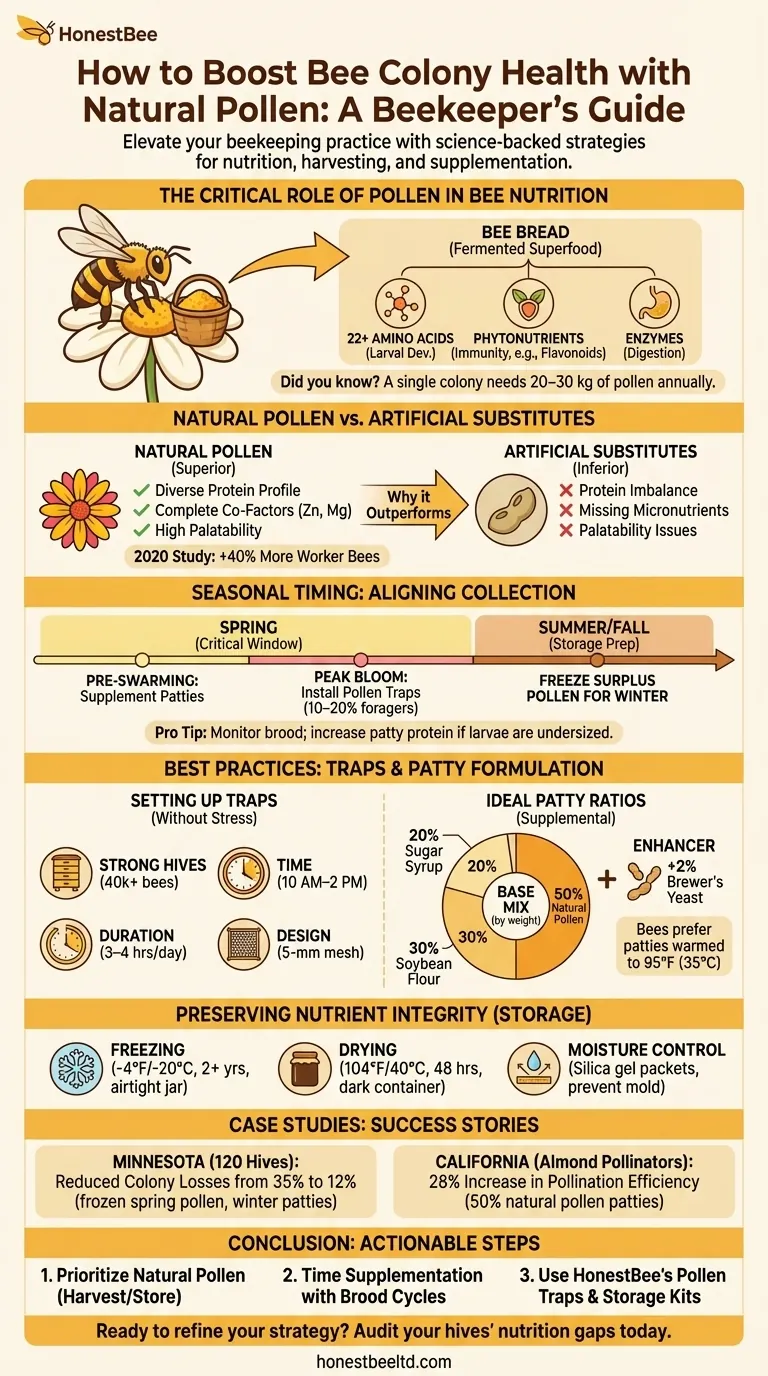
Related Products
- Rapid Bee Feeder White Plastic 2L Round Top Feeder for 8 or 10-Frame Bee Hives
- Professional In-Hive Frame Bee Feeder by HONESTBEE
- 3.5L Plastic Beehive Frame Feeder Deep Frame Water Feeder for In Hive Use
- HONESTBEE Entrance Bee Feeder Professional Hive Nutrition Solution for Beekeeping
- HONESTBEE Entrance Bee Feeder Efficient Hive Front Liquid Feeding Solution for Beekeeping
Related Articles
- The Paradox of Plenty: Why Warm Winters Are a Silent Threat to Bee Colonies
- More Than Food: How Dry Sugar Solves a Beehive's Deadliest Winter Problem
- Designing for Instinct: Why the Nuc Box is the Perfect Swarm Trap
- How Beekeepers Can Optimize Autumn Feeding for Stronger Winter Colonies
- The Winter Fortress: Engineering Colony Survival with the Hive Top Feeder




